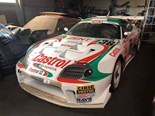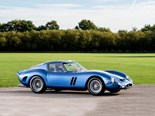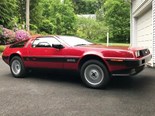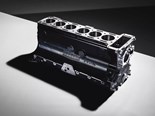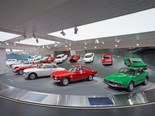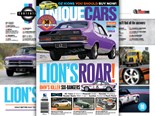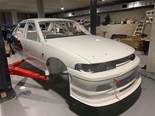A brief history of the Ford Bronco





















|

|

|

|

|

|

|

|

|

|
Ford’s retro 4x4 has returned, but its history stretches back over 55 years
It’s a tall order when manufacturers revive any historic nameplate, with established heritage - and established enthusiasts - often fuelling added criticism and expectation regarding all aspects of design, packaging and positioning.
Ford’s revived Bronco has finally been revealed and has been one of the most high-interest reborn retro models in recent times, but it also revives a nameplate not seen since 1996 – and one that dates back to 1965.
So how did we get here?
Ford Bronco first-generation: 1965-1977

Ford’s original Bronco enjoyed an enduring 12-year production run, beginning in 1965.
In many ways, it is perhaps a spiritual successor or indeed the consumer evolution of Ford’s WWII-era GPW – the Ford-licenced production version of the Willys MB Jeep.
The original Bronco shared the showroom with the ever-popular Mustang, and was marketed towards the youth as a stylish but functional off-roading vehicle.

If had real utilitarian ability too; typified by its small wheelbase and simple slab-sided panels which were cheap to make and repair whilst free of protrusions to protect it from passing rocks.
Upon launch, the Bronco was powered by Ford’s 2.8lt inline-six backed by a three-speed manual transmission. In 1966, the 4.7lt V8 was added before being replaced by the larger 4.9lt in 1968. The standard inline-six swelled to 3.3lts in 1973 with a three-speed automatic added to the range.
READ NEXT: REFLECTING ON THE 4X4 XY FALCON UTE
Three body styles were available over the original Bronco’s production, with the most prolific being the ‘wagon’, a two-door body with removeable hardtop.
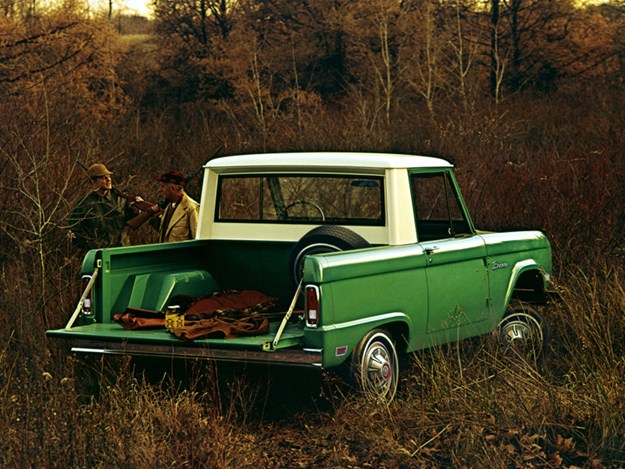
A 'sports utility pickup', or ‘half-cab’ was available until 1973, which traded its open-air rear bench seats for an enclosed cabin and a short bed.
The Bronco Roadster came without a roof altogether, and with soft inserts instead of doors. Production was short-lived, ending in 1968. It remains the rarest of all original Broncos with just 5000 believed to have been built; compared to over 17,000 half-cabs and more than 200,000 wagons.
Ford Bronco second-generation: 1978-1979

Fuel crises in the early 70s forced American car makers to take cost minimisation seriously. Chevrolet forged the blueprint with its successful money-making K5 Blazer which was essentially a shortened C/K pickup.
Ford mimicked the formula with its own F-100, taking the existing architecture and shortening it to create what was the second-generation Bronco.
READ NEXT: WHAT’S A CLASSIC FORD MUSTANG WORTH?
The engine lineup was V8-only, with the 5.8lt unit available as standard, with a larger 6.6lt V8 available as an option. It sounded great on paper; however both of these engines were markedly underpowered given their gargantuan size. The big 6.6lt churned out a rather underwhelming 111kW.
Legend has it that Ford intended to release a longer wheelbase four-door, but that was never to be. The second-generation Bronco endured for just two short years, with the only body style available being a two-door with a removeable hardtop.
Ford Bronco third-generation: 1980-1986

Visually, many would look at the third-gen Bronco and assume it to be a light visual facelift of the short-lived second-gen; but the redesign was far more than skin deep.
Ford sought to improve the Bronco’s driveability both on and off the road; with considerable weight-saving measures taken up. The new Bronco ended up lighter than the outgoing version and, innovatively for the time, ditched its solid front axle for an independent system.
This generation of Bronco was even built in Australia at Ford’s Brisbane plant, sold locally between 1981 and 1987.
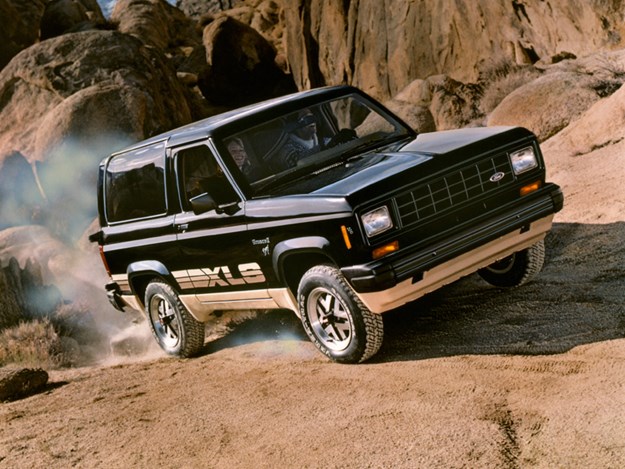
Ford Bronco II
Again, the sole body option was the two-door with removeable hardtop. Powertrain scope was increased however with the return of the six-cylinder, a 4.9lt unit as standard.
The previous-gen’s 5.8lt was carried over as an option. An upgraded 5.8lt was also introduced later in its lifecycle, along with a new 4.9lt (also badged as a 5.0) with electronic fuel injection.
Much like the modern reborn Bronco, the third-generation Bronco also introduced a quasi-baby Bronco called the Bronco II. The Bronco II was a smaller and more conventional soft-roading SUV based on the Ranger, and intended to rival Jeep’s XJ Cherokee.
Ford Bronco fourth-generation: 1987-1991
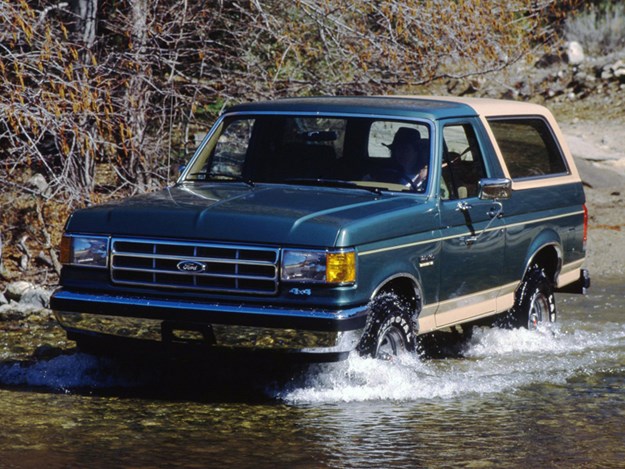
The fourth-generation update was a more superficial restyle than its predecessor. Visually, the front clip was redesigned to better mimic the F-150 of the period, whilst the cabin too got a refresh.
Mechanically, the outgoing Bronco’s 4.9lt inline-six, 4.9lt V8 and 5.8lt V8 were brought over, now with fuel-injection. A five-speed manual was new for the range, as was a four-speed automatic.
Ford Bronco fifth-generation: 1992-1996
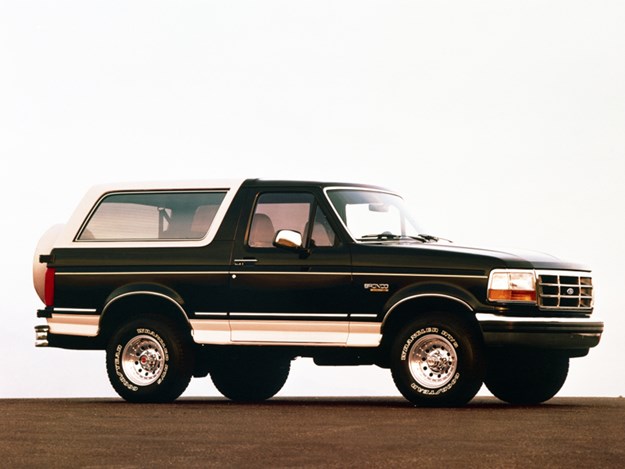
The 90s marked the beginning of the end for the original uninterrupted Bronco lineage. More tarmac-inclined conventional SUVs were fast becoming fashionable, and Ford’s Bronco was beginning to look a little outmoded.
Ford released the Explorer in 1991, fitting squarely in between the Bronco and Bronco II, and was met with quick sales success for both off-road enthusiasts and surburbia-bound family buyers.
The Bronco released in 1992 with new bodywork but initially with carried over powertrains. For faithful fans, the Bronco’s removeable hardtop was also no longer a quick operation. An increasingly safety-conscious climate forced Ford to integrate things like brake lights and seatbelts into the beloved removable roof.
The final Bronco was constructed in 1996, just as the Ford Expedition underwent production. Between the Explorer, Explorer Sport and Expedition, the Bronco was relegated to the history books.
Until 2020, that is…
Ford Bronco sixth-generation: 2020 and beyond

Yesterday, after many months of teasers and hints, the curtain was lifted on Ford’s reborn Bronco.
The design language clearly taps its original first-generation forebearer and seems to hark back to that early utilitarian ethos most.
Based on the Australian-developed Ranger, the Bronco’s range is a three-pronged approach: there is a short-wheelbase two-door model, a longer full-size four-door model, and a smaller soft-roading Bronco Sport.
Removeable doors and roof return to much fanfare, and on paper it boasts class-leading off-road specs.
Unfortunately, it won’t be produced in right-hand drive, and therefore will not be coming to Australia in an official production capacity as of yet. Which is a shame, cause we rather like it.
Classic Australian Family Car Value Guide home page
Muscle Car Value Guide home page
Japanese Classic Car Value Guide home page
Unique Cars magazine Value Guides
Sell your car for free right here
Get your monthly fix of news, reviews and stories on the greatest cars and minds in the automotive world.
Subscribe

.jpg)









